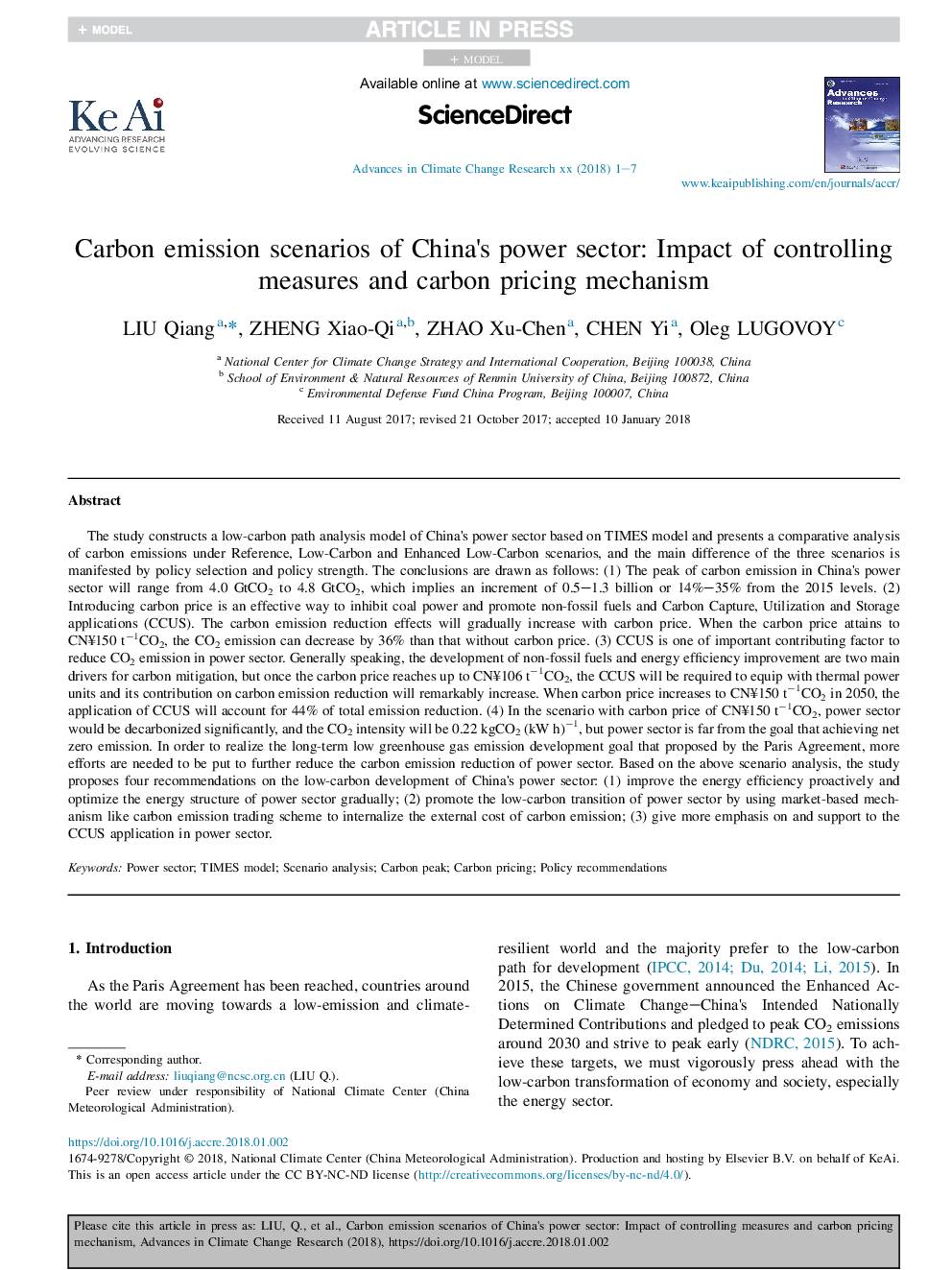| کد مقاله | کد نشریه | سال انتشار | مقاله انگلیسی | نسخه تمام متن |
|---|---|---|---|---|
| 8906184 | 1634088 | 2018 | 7 صفحه PDF | دانلود رایگان |
عنوان انگلیسی مقاله ISI
Carbon emission scenarios of China's power sector: Impact of controlling measures and carbon pricing mechanism
ترجمه فارسی عنوان
سناریوهای انتشار کربن در بخش انرژی چین: تاثیر کنترل اقدامات و مکانیزم قیمت گذاری کربن
دانلود مقاله + سفارش ترجمه
دانلود مقاله ISI انگلیسی
رایگان برای ایرانیان
کلمات کلیدی
موضوعات مرتبط
مهندسی و علوم پایه
علوم زمین و سیارات
علم هواشناسی
چکیده انگلیسی
The study constructs a low-carbon path analysis model of China's power sector based on TIMES model and presents a comparative analysis of carbon emissions under Reference, Low-Carbon and Enhanced Low-Carbon scenarios, and the main difference of the three scenarios is manifested by policy selection and policy strength. The conclusions are drawn as follows: (1) The peak of carbon emission in China's power sector will range from 4.0 GtCO2 to 4.8 GtCO2, which implies an increment of 0.5-1.3 billion or 14%-35% from the 2015 levels. (2) Introducing carbon price is an effective way to inhibit coal power and promote non-fossil fuels and Carbon Capture, Utilization and Storage applications (CCUS). The carbon emission reduction effects will gradually increase with carbon price. When the carbon price attains to CNÂ¥150Â tâ1CO2, the CO2 emission can decrease by 36% than that without carbon price. (3) CCUS is one of important contributing factor to reduce CO2 emission in power sector. Generally speaking, the development of non-fossil fuels and energy efficiency improvement are two main drivers for carbon mitigation, but once the carbon price reaches up to CNÂ¥106Â tâ1CO2, the CCUS will be required to equip with thermal power units and its contribution on carbon emission reduction will remarkably increase. When carbon price increases to CNÂ¥150Â tâ1CO2 in 2050, the application of CCUS will account for 44% of total emission reduction. (4) In the scenario with carbon price of CNÂ¥150Â tâ1CO2, power sector would be decarbonized significantly, and the CO2 intensity will be 0.22Â kgCO2 (kWÂ h)â1, but power sector is far from the goal that achieving net zero emission. In order to realize the long-term low greenhouse gas emission development goal that proposed by the Paris Agreement, more efforts are needed to be put to further reduce the carbon emission reduction of power sector. Based on the above scenario analysis, the study proposes four recommendations on the low-carbon development of China's power sector: (1) improve the energy efficiency proactively and optimize the energy structure of power sector gradually; (2) promote the low-carbon transition of power sector by using market-based mechanism like carbon emission trading scheme to internalize the external cost of carbon emission; (3) give more emphasis on and support to the CCUS application in power sector.
ناشر
Database: Elsevier - ScienceDirect (ساینس دایرکت)
Journal: Advances in Climate Change Research - Volume 9, Issue 1, March 2018, Pages 27-33
Journal: Advances in Climate Change Research - Volume 9, Issue 1, March 2018, Pages 27-33
نویسندگان
Qiang Liu, Xiao-Qi Zheng, Xu-Chen Zhao, Yi Chen, Oleg Lugovoy,
